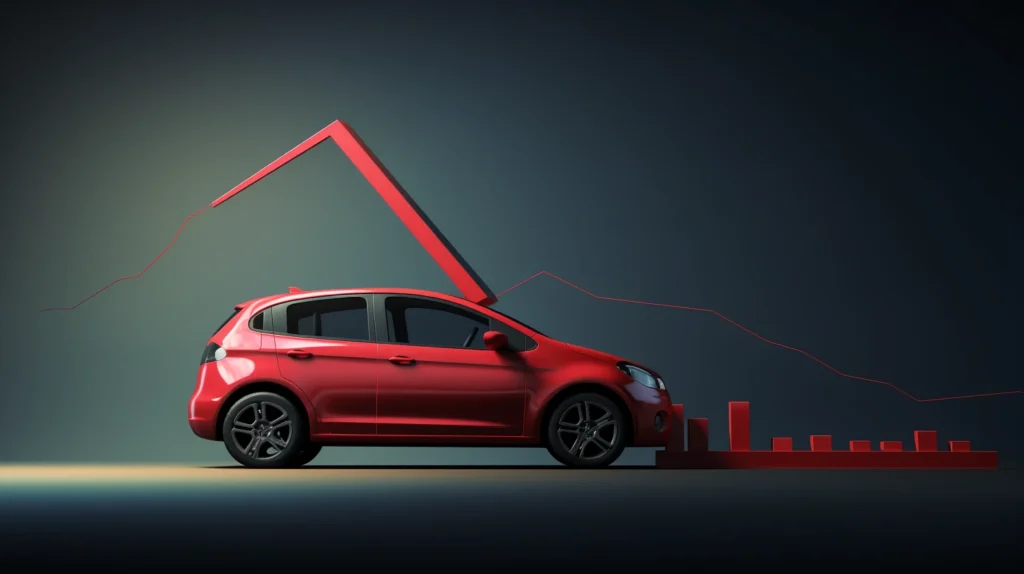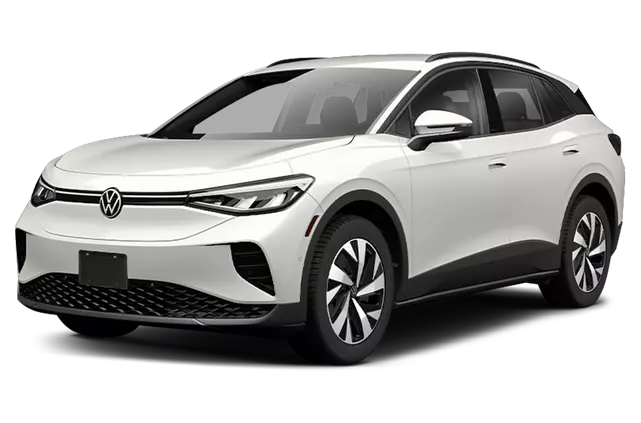Electric vehicles (EVs) have been hailed as a revolutionary solution to combat climate change and reduce our dependence on fossil fuels. With their zero-emission capabilities and innovative technology, EVs are poised to dominate the automotive industry. However, recent data suggest a concerning trend – electric vehicle demands may be declining.
But is this dip in demand just a temporary setback or indicative of something more significant – a potential end to the electric vehicle era? Let’s examine whether these declining demands are just bumps along the road or if they truly indicate a detour away from our electrified dreams of sustainable transportation.
Image credit: ev-volumes
Are Ev Sales Declining? Electrifying the Car Market May Be Getting Harder.
In 2019, electric vehicle sales in the US declined compared to 2018 due to a combination of factors. Lower gas prices, a lack of charging infrastructure, and a lack of consumer education about electric vehicles all contributed to the decline in demand. To compete with traditional gasoline-powered cars, the industry faces the challenge of increasing demand for electric vehicles.
One way to do this is by offering government incentives and subsidies to reduce the cost of electric vehicles and make them more accessible to consumers. Automakers also invest in longer-lasting batteries and more efficient charging infrastructure to make electric cars more appealing. Additionally, the industry is focusing on improving the design and performance of electric vehicles to attract more customers.
In addition to these efforts, automakers need to focus on developing new technologies, such as autonomous driving and connected cars, to make electric vehicles more attractive.
EVs still have a long way to go before they become mainstream, but the industry is working hard to make them more accessible and desirable to consumers. The demand for electric vehicles could soon rise with the right combination of incentives, improved infrastructure, and new technologies.
Electric Vehicle Sales Statistics
The electric vehicle market has seen a decline in demand in 2020, with global sales estimated to fall by 6.3 percent due to the COVID-19 pandemic. This stands in stark contrast to the global market, where electric car sales rose by 31.2 percent between 2018 and 2019. In the United States, electric car sales declined by 1.3 percent in 2019, with sales of around 360,000 units.
Despite the decline in demand, electric vehicle sales have increased by nearly 140 percent since 2017 and are expected to continue to rise in the coming years. Analysts predict that electric vehicle demand will rebound in 2021 and 2022, with sales increasing by 10.7 percent and 8.2 percent, respectively. The US electric vehicle market is expected to grow by 11.7 percent in 2021, driven by increased government incentives and consumer demand.
As the demand for EVs continues to grow, governments and manufacturers are investing in research and development to create more efficient and cost-effective electric vehicles. Furthermore, the increasing availability of charging infrastructure and the development of new technologies are expected to drive the growth of the electric vehicle market in the coming years.
Why Aren’t People More Interested In Evs?
In the past few years, electric vehicles (EVs) have become increasingly popular, but now demand for EVs is decreasing. One potential reason for this decline in interest is the high upfront cost of buying an EV. With prices ranging from $30,000 to $90,000, EVs are often too expensive for many people, making them an unattainable option. In addition to the cost, EVs have a limited battery range, making them inconvenient for long-distance travelers.
Another reason many people are hesitant to purchase an EV is because they don’t understand the technology behind them. EVs have been slower to develop than traditional vehicles, and they lack the variety of options available for traditional vehicles.
EVs also don’t perform similarly to traditional vehicles, which can deter some people from choosing one. Finally, there is a lack of infrastructure for EV charging, which can deter potential buyers.
Overall, the declining demand for EVs is understandable, given the various factors that discourage potential buyers. Unless these issues are addressed, people will likely continue to choose traditional vehicles over EVs.
Who’s Least Likely to Want an Ev?
While electric vehicles (EVs) are gaining popularity among drivers for their eco-friendliness and energy efficiency, there are certain demographics that may be less inclined to embrace this emerging technology.
One group least likely to show interest in EVs comprises drivers seeking powerful and high-performance vehicles. EVs generally have lower power levels than their gas-powered counterparts, which may deter individuals who prioritize speed and acceleration in their driving experience. For those who crave the adrenaline rush of a robust engine, the performance capabilities of current EV models might not meet their expectations.
Another demographic less likely to opt for an EV include tech-savvy drivers searching for cutting-edge features and gadgets. While advancements in electric vehicle technology continue rapidly, traditional gas-powered cars often offer more extensive options when it comes to innovative features and advanced infotainment systems. Those who value having the latest technological advancements at their fingertips may find limited choices within the available EV offerings.
Financial considerations also play a role, with budget-conscious consumers potentially showing less interest in adopting electric vehicles due to higher upfront costs than gasoline-powered cars. Although various incentives and subsidies are being introduced by governments worldwide, making EVs more accessible financially, some individuals may still perceive them as beyond their means or prefer cheaper alternatives.
Lastly, a subset of car enthusiasts appreciate the sensory experiences associated with internal combustion engines—such as the distinct sound and smell—that electric motors cannot replicate. The relatively quiet operation of most EVs can be seen as lacking excitement or character for these particular individuals.
However, despite these groups expressing lower interest in owning an electric vehicle currently, it is essential to note that overall demand for EVs continues its upward trajectory. The environmental benefits offered by zero-emission transportation solutions contribute significantly toward this growing appeal among environmentally conscious consumers.
Furthermore, government initiatives and incentives promoting electric vehicle adoption are increasingly prevalent, making EVs more appealing to a broader range of drivers. As technology advances, driving ranges improve, and costs decrease, the barriers currently deter certain demographics from embracing EVs will likely diminish over time.
Are There Any Proposed Solutions to Reverse This Decline?
To reverse the decline in electric vehicle (EV) demand, governments and businesses must implement various solutions. First, increasing incentives like tax credits and subsidies can make EVs more affordable for potential buyers. Additionally, investing in charging infrastructure expansion is crucial to enhance accessibility, especially in rural areas.
Public education about the environmental and economic benefits of EV adoption is another key aspect. Raising awareness regarding reduced emissions and long-term cost savings associated with EV usage can help change consumer perceptions.
Furthermore, making a wider range of used electric vehicles available on the market will give consumers more options at different prices. This can be achieved through partnerships between businesses and government entities to promote second-hand EV sales.
Investing in research and development for advanced battery technology will also drive future growth by improving efficiency and driving ranges. Governments should support innovation initiatives focusing on developing next-generation EVs to meet consumer performance, features, and affordability expectations.
Electric Vehicle Trends 2023
The demand for electric vehicles is on the rise, and this trend is expected to continue into 2023. Global projections indicate that EVs will account for almost a quarter of new vehicle sales worldwide by that year, with the United States alone witnessing a doubling of sales from 2020 to 2023. This surge in demand is due to several factors.
Electric vehicles are becoming increasingly efficient, with longer ranges and faster charging times. Additionally, These are becoming more connected, with advanced driver assistance systems and other features making them safer and more convenient for drivers.
The infrastructure is also improving, with more charging stations available in public and private locations. Finally, electric vehicles are becoming greener, with zero tailpipe emissions and less dependence on fossil fuels.
These electric vehicle advancements make them an attractive option for many drivers. With the increased demand for electric vehicles, governments and automakers continue investing in research and development to make them even more efficient, affordable, and accessible.
Electric Vehicle Forecast 2030
Electric vehicle sales are expected to grow steadily in the coming years, with Bloomberg New Energy Finance (BNEF) forecasting that sales of electric vehicles could reach 30 million by 2030.
This represents a huge increase from the 1.2 million electric vehicles sold in 2019 and is largely based on the assumption that these become cost competitive with conventional cars in the next decade. BNEF expects electric vehicle battery costs to decrease significantly by 2030 to boost demand further.
However, the demand could decline if gas prices remain low and consumer preferences shift away from electric vehicles.
It is yet to be determined how the EV market will develop in the coming years, but it is clear that the demand for electric vehicles is expected to increase in the near future.


